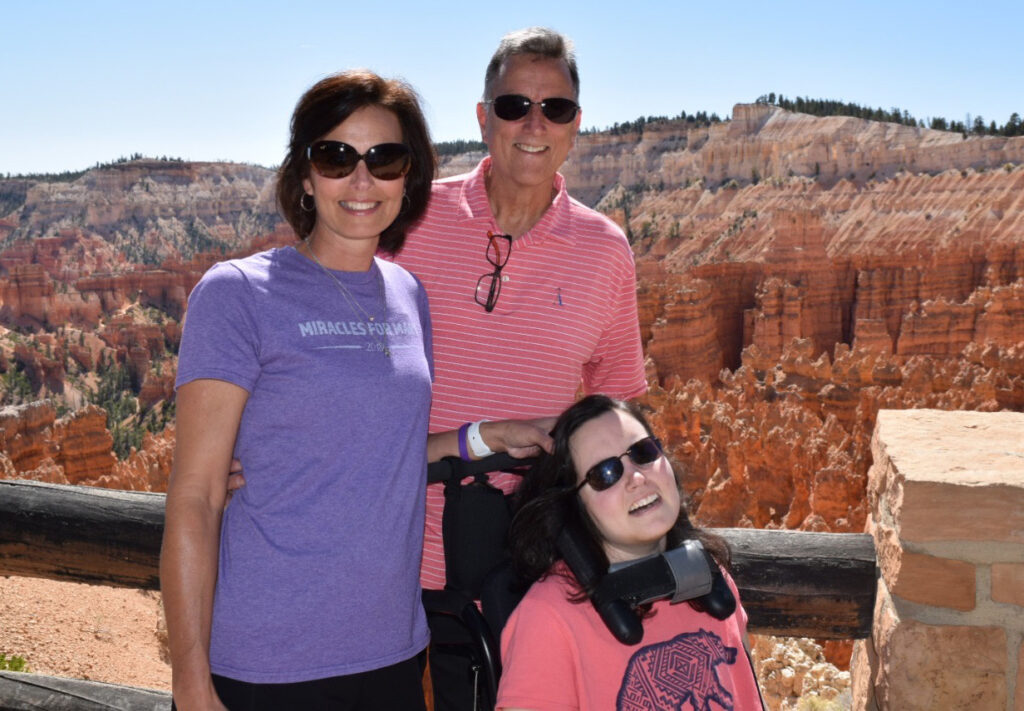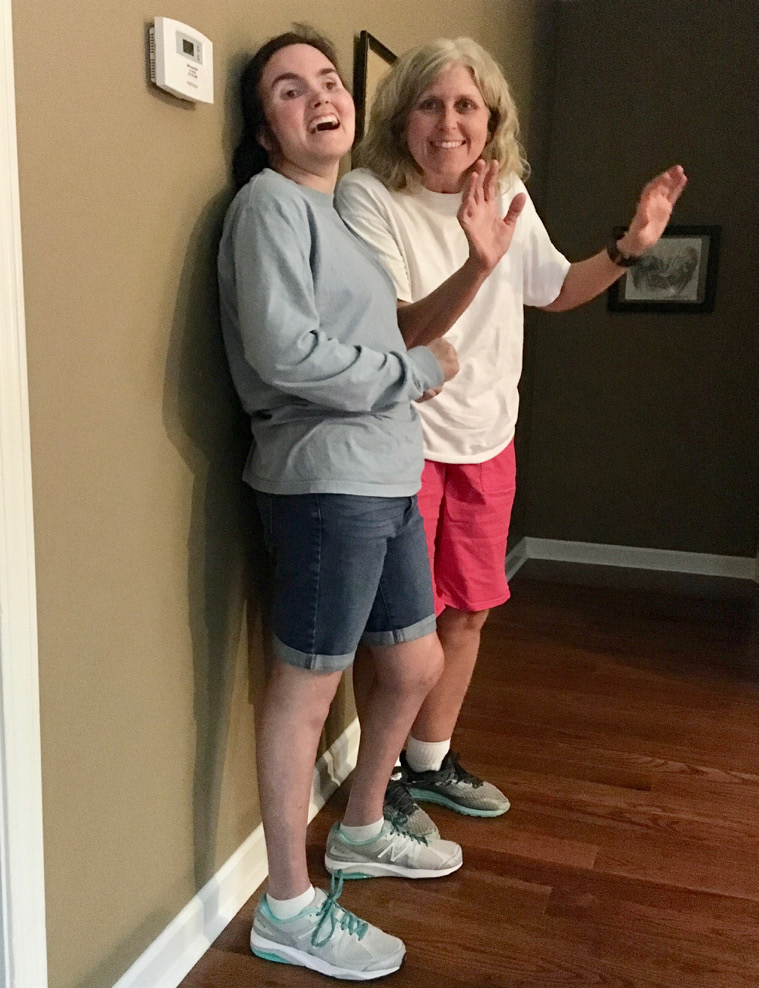Ask the Specialist: The Importance of Mealtime Routines
By: Kristen Dodderer, M.S., OTR/L, CBIS and Mallory Halverson, M.S., OTR/L, CBIS

Mealtime can be challenging for people with brain injuries for many reasons. After a brain injury, you may have a hard time recognizing the needs of your body, especially when it comes hunger. While changes in your diet should be advised and monitored by your treatment team, below are some tips to help make your mealtime as successful as possible!
Structure is very important for a person with a brain injury. Because of your injury, your brain can have a hard time recognizing the time of day or remembering to eat. Eating at the same time each day can help your body re-learn a daily schedule and recognize hunger signals again. You can set reminders/alarms or follow a written schedule to help build your routine.
Mealtime is a social activity, often involving family and friends. It is best to try to return to the previous routines you had before your injury, even if modifications need to be made.
Distraction and trouble focusing can be a barrier to successful mealtimes. You may be easily distracted by sights, sounds, or smells around you because your brain has trouble deciding what to focus on and filtering out distractions. If possible, try to have your meals in a quiet environment with as few distractions as possible.
After a brain injury, some people may be overwhelmed by the tastes, textures, and smells of the meal itself. Foods may taste different than you remember
and may seem too bland or too strong. You might need to be offered a food several times before you feel comfortable enough to try it. Even just allowing a food item to sit on your plate can be helpful in learning to enjoy the sensory experience of a variety of foods.
The journey to improving your mealtime routine can feel slow and frustrating sometimes. Remember to celebrate the little victories and seek the support of
others!
References:
American Journal of Occupational Therapy, November/December 2007, Vol. 61, 686-700. https://doi.org/10.5014/ajot.61.6.686
American Journal of Occupational Therapy, March 2018, Vol. 72, https://doi.org/10.5014/ajot.2018.025650
American Journal of Occupational Therapy, November/December 2009, Vol. 63, 701-709. https://doi.org/10.5014/ajot.63.6.701
Hartnedy, S. and Mozzoni, M.P. (2000), Managing environmental stimulation during meal time: eating problems in children with traumatic brain injury. Behavioral Interventions, 15: 261-268.
Resources:
https://www.brainline.org/article/feed-your-body-feed-yourbrain-nutritional-tips-speed-recovery
https://www.brainline.org/article/attention-and-brain-injury
https://synapse.org.au/fact-sheet/managing-fatigue/
Want to suggest a topic? Email us at braininjury@uams.edu.
Stories from the TBI Community: Miracles for Mary
As Told to Kimberly Lamb
We are not ashamed to tell our story because we have found a joy in our experience that is indescribable. We want to help others find that joy.
Jim Drake

The Miracles for Mary organization was born out of a tragedy that turned into hope. In November 2009, Mary Drake was involved in a horrific head-on collision. Mary’s injuries were extensive, including broken bones in every limb, hip out of joint, broken femur, crushed hand, and of most consequence, a
traumatic brain injury.
To reduce the pressure from swelling on her brain, Mary had surgery to remove part of her skull. Two days later, she had another surgery to repair her limbs and her hand. The Drakes turned to their faith and put Mary’s outcome in God’s hands. Mary’s hospital and rehabilitation stay lasted eight months.
She spent three weeks in intensive care, four months on the rehabilitation floor, and three months at Baptist Health Rehabilitation Institute (BHRI).
During that time, the Drakes kept friends and family informed about Mary’s status through a service called Caring Bridge. Patti’s updates ranged from status changes to reflections of faith, and acknowledgement of their dependence on God, with an affirmation at the end of every note that “God is Good, All the time.”
People, literally from across the world, responded. They voiced their love, prayers, and support, and their belief in God’s glory and mercy. There have been over a half million visits to Mary’s page, https://www.caringbridge.org/visit/marydrake/journal. As witnesses to this faith, the Drakes have been affirmed in their hope. According to Patti, “It has given us the fortitude to endure the setbacks, and the will to never, ever give up!”
As Mary was preparing to return home in August, 2010, a friend asked for a key
to their house to do some renovations. To make the transition easier, their church family had replaced the carpet with hardwood floors for easier use with a wheelchair, made the bathrooms more accessible, and turned the dining room into Mary’s new bedroom. Jim said, “Although we were well prepared by staff at ACH and BHRI about needs at home, until you face it, you don’t know. We experienced a whole lot of love. People have come to our house and worked with Mary just because they wanted to participate in her recovery.”

As the Drakes continued their journey with Mary, they wondered about others across the state on similar paths. They knew that living in the city gave them access to doctors and hospitals. Jim said, “What do people do when they don’t live in the city? I know how hard it is to take care of a loved one and about all of the things you go through. People came to our aid, supported us with love, prayer, and good works. What happens to people when they don’t have support?”
Concern and compassion for others continued to be important for Jim and Patti. In 2013, they made the decision to honor Mary through the development of a private foundation, Miracles for Mary, https://miraclesformary.com.
Jim said, “Mary is a model of perseverance for us.” Through their foundation, the Drakes began to reach out to others and share the love, prayer, and support that had provided them strength in their own journey.
Miracles for Mary, a 501(c)(3)nonprofit organization, focuses on helping families cope with traumatic brain injury so that they may have a transformational experience centered on faith and inspired by hope and love. The Drakes have made it their mission to help families navigate through a life-changing injury so that they may find joy in the adversity.
Through Miracles for Mary, the Drakes believe they can help people in three ways: emotional, spiritual, and financial. According to Jim, “Sometimes you only need someone who listens, cares, and has empathy because they can relate to you. You may only need someone who can tie the knot between the logical and the emotional and help you get through the grief. Sometimes the best thing we can provide is emotional support.”
While the Drakes do not preach to those they help, they do share how their faith in God helped them live above their circumstances. Jim said, “We are not ashamed to tell our story because we have found a joy in our experience
that is indescribable. We want to help others find that joy.”
The Drakes have also made a financial impact on those they serve, especially in the rural areas. They have been able to provide ramps, help make homes accessible, provide therapy equipment, tracking systems, and even splints not covered by insurance. Through the generosity of supporters, they have also been able to purchase a handicapped accessible van for a family in need.
Individuals and families helped by the Miracles for Mary foundation are most often referred by healthcare professionals who work with people living with traumatic brain injury, especially therapists who know what is needed at home.
Since 2013, the Miracles for Mary foundation has helped 15 individuals and families and distributed more than $160,000 dollars.

Funds to support the work of the foundation are raised through an annual charity golf event and silent auction. Over 200 golfers support the tournament. Money is also raised through a biking event called “Pedaling for a Purpose”, along with donations.
Today, Mary lives at home with Jim and Patti. According to Patti, “While the early days were touch and go, we have witnessed one miracle after another. Many people didn’t believe that Mary would live, much less graduate from high school, sit on a horse with confidence, sit in a regular chair holding up her head or stand places around the world unassisted. For us, it has been a transformational experience.”
Want to share your story? Email us at braininjury@uams.edu.
Resource Highlight
Smart 911
With Smart911, you can provide 9-1-1 call takers and first responders critical information you want them to know in any kind of emergency.
When you call 9-1-1, your Smart911 Safety Profile displays on the 9-1-1 screen and the 9-1-1 call takers can view your addresses, medical information, home information, description of pets and vehicles, and emergency contacts. You can provide as much or as little information as you like.
Smart911 is a national service meaning your Smart911 Safety Profile travels with you and is visible to any participating 9-1-1 center nationwide.
Your Safety Profile Is Free, Private, And Secure. Add as much or as little to your profile as you want. It’s up to you, and your information will only be seen if you ever have to call 9-1-1.
Safety Profiles can Include:
- People living in your household
- Phone numbers associated with your family
- Pets, service animals, and livestock
- Medical conditions and allergies
- Medications and medical equipment
- Property details, layout, and utility information
- Vehicle descriptions
- Emergency contacts
Sign up at Smart911.com or download the app in the App Store or Google Play!
Social Security Disability Pointers: Help a Loved One with Social Security
By Phylis Dills, Social Security Public Affairs Specialist, Little Rock
The aged and people with disabilities may need extra assistance to manage their finances. If you have a loved one who needs your help, you may be able to become a representative payee.
A representative payee receives the beneficiary’s payments and is given the authority to manage them on the beneficiary’s behalf. We recognize that turning someone’s finances over to someone else is a big deal, so we make sure that the beneficiary needs the help and that you are the best person to offer that help. We may also monitor that you spend the benefits appropriately on behalf of the beneficiary.
If we choose you to serve as a representative payee, that appointment is only to manage Social Security and SSI funds, not to manage non-Social Security money or medical matters. As a representative payee, you must know what the beneficiary’s needs are so you can decide the best use of benefits for their care and well-being.
Each year, Social Security may ask you to complete an annual Representative Payee Report to account for the benefits you’ve received and spent on their behalf. You can either fill out the form and return it to Social Security or go online at www.socialsecurity.gov/payee to file the report.
Due to a recent change in the law, we no longer require the following payees to complete the annual report:
- Natural or adoptive parents of a minor child beneficiary who primarily reside in the same household as the child
- Legal guardians of a minor child beneficiary who primarily reside in the same household as the child
- Natural or adoptive parents of a disabled adult beneficiary who primarily reside in the same household with the beneficiary
- Spouse of a beneficiary
We’ve also made it easier for caregivers who are representative payees to do business with us. If you’re a representative payee, check out our new Representative Payee Portal at www.socialsecurity.gov/myaccount, which lets representative payees conduct their own business or manage direct deposits, wage reporting, and annual reporting for their beneficiaries.
You can read more about becoming a representative payee at www.socialsecurity.gov/pubs/EN-05-10076.pdf.
Please be aware that past newsletter issues may contain outdated information. For the latest updates on resources and events, visit our website or contact us at braininjury@uams.edu with any questions.
